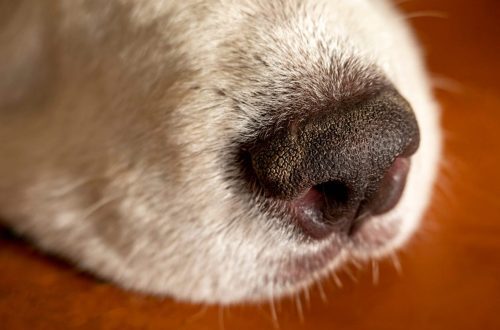
It’s impressive how dogs can change the quality of life for people with special needs.
Specially trained to help people with disabilities lead independent lives, service dogs perform many different functions, whether it’s helping them cross the road or providing psychological support to war veterans suffering from post-traumatic stress disorder. The dog can be trained both by the person who needs it (of course, with the support of a professional), and prepare for service according to a special program from childhood.
What kind of work can these four-legged people do, and how do you recognize a good working dog?
Health Services Alert
These dogs are trained to be a reliable support for people suffering from various diseases, such as diabetes, apoplexy or narcolepsy. The dog warns the owner of a possible imminent attack, helps to get to a safe place, brings the necessary medicines and attracts help, including dialing an ambulance if necessary.

photo:dogster.com
Guide-dog
The dog helps people with vision problems navigate in space. Most often, Labrador Retrievers, Golden Retrievers, and a mixture of these two breeds are involved in training programs for this type of assistance. One of the advantages of such dogs is the undercoat, which makes them suitable for service in any climate. Their size is also great for work, as they are not too big and can easily accompany a person on public transport and planes, but at the same time they are large enough to effectively guide a person. “If a dog is too small, then it simply will not be able to successfully perform its duties,” explains Christine Lucas, one of the leaders of the guide dog training program.
In the organization Christine is a part of, dog training starts at 16 months. Before that, from 8-10 weeks old, they are raised by volunteers who instill in them elementary manners and help the puppies to socialize. The official guide dog training program lasts 12 weeks. Trainings are quite strict, trainers work individually with dogs. The readiness of a dog to work with a person is evaluated in several stages. And when the guide meets the owner, they train together for another two weeks.
“Our clients are all completely different – each with their own life situation, character, their own special desires and needs,” says Kristin. – When you can
matching a person with the right dog for him and then watching them become real partners is the best thing that can be.

photo:dogster.com
Help for people with hearing impairments
Dogs help people who are deaf or hard of hearing by alerting them to important sounds, such as an alarm or a phone call. Audrey Trishman, who runs one of the training programs for such service dogs in the US, says: “We take into the program not only purebred Labrador Retrievers, but also puppies from the shelter. Good candidates are toddlers who actively respond to sounds and are interested in them.”
As for the training itself, in the organization where Audrey works, puppies start training as early as 2 months old and do not leave the school for several weeks. Employees use this time to socialize dogs, introduce them to different sounds, sights and textures, and work on self-confidence. After such training, puppies are distributed to institutions where they are trained in obedience and the performance of certain tasks. There, for another 12-18 months, a trainer works with each puppy.
Help for people with disabilities
Such dogs help people who are not able to do it on their own to move around. They push wheelchairs or help a person balance while standing and walking. These service dogs know more than 40 commands that could be useful to their owners. They open and close doors, turn lights on and off, pick up fallen objects. The best dogs for this job are a cross between a Labrador and a Golden Retriever. Their size, strength, and ability to learn quickly are well suited to these tasks.

photo:dogster.com
Help for people with mental disorders
Dogs also help people suffering from various psychological illnesses, such as post-traumatic stress disorder, which is common in people who have returned from war. Animals can be specially trained to work with people suffering from obsessive-compulsive disorder, autism, schizophrenia, bipolar affective disorder, or panic attacks. Various breeds or crossbreeds of any size are suitable for this job.
These dogs not only provide emotional support to the owner, they are trained to help patients with a certain type of disorder: remind people to take their medications, help stop panic attacks, and lead a confused owner to a quiet, safe place.






